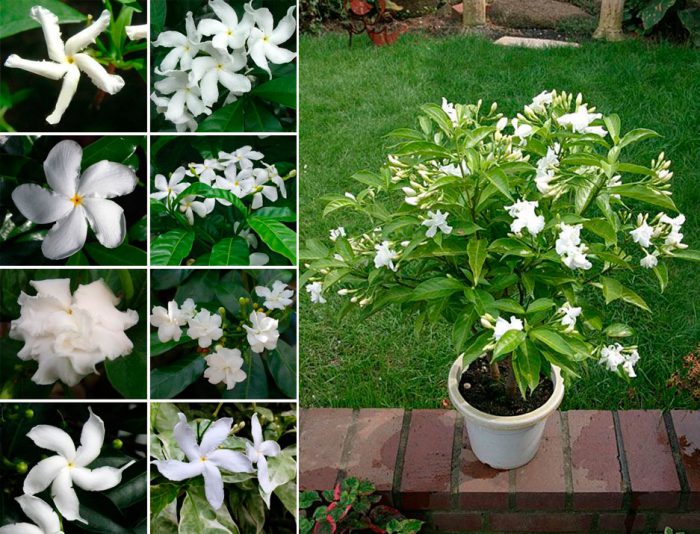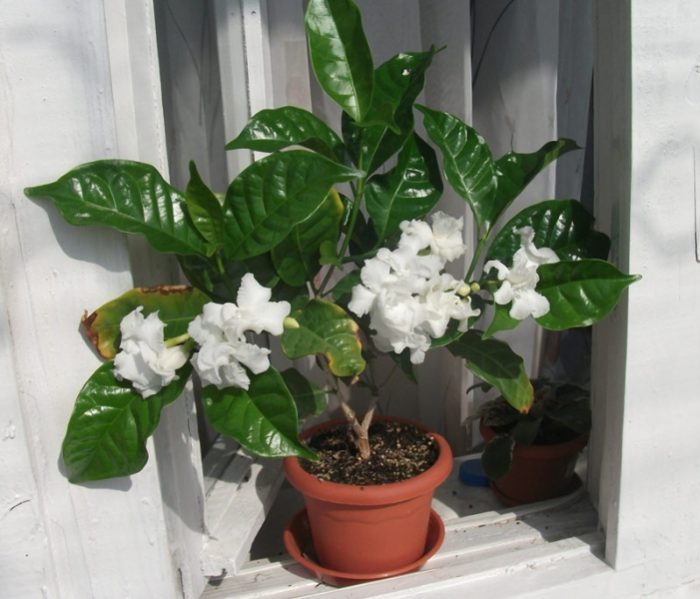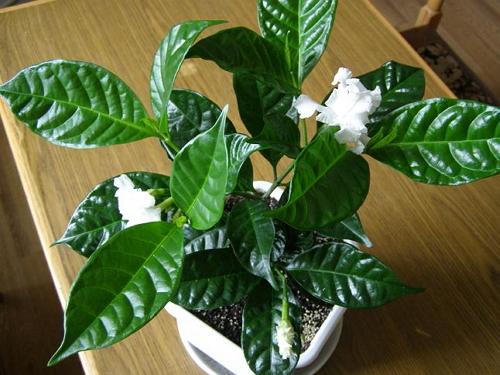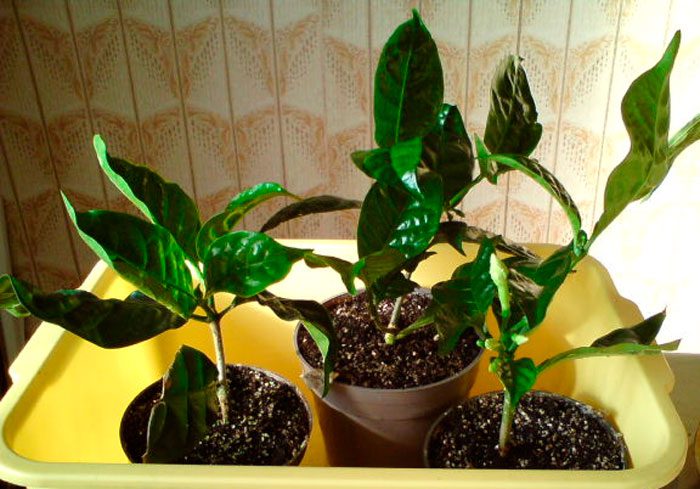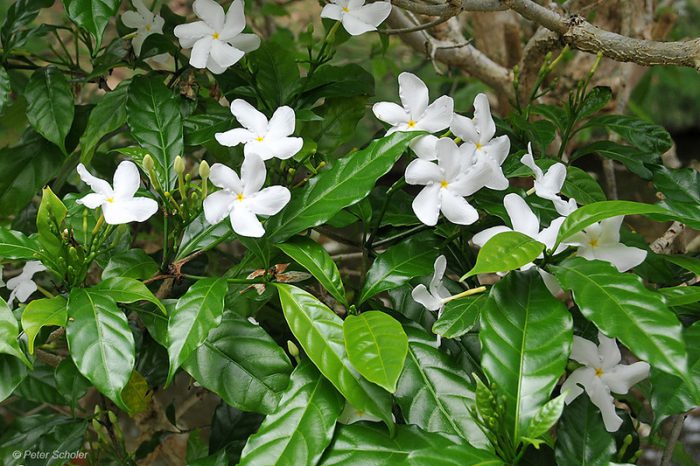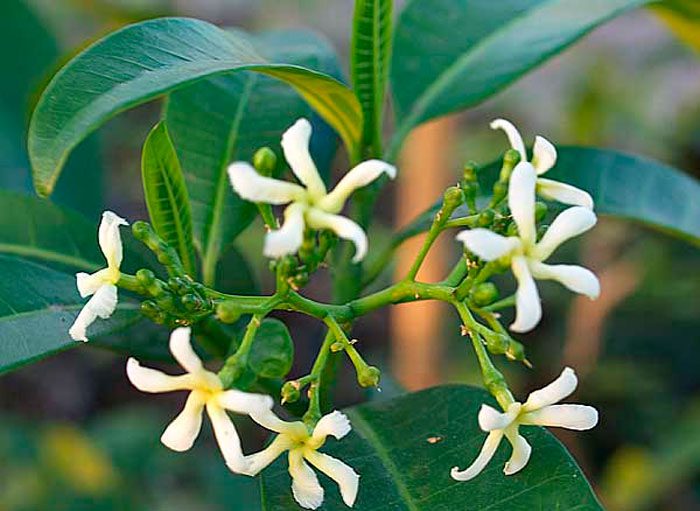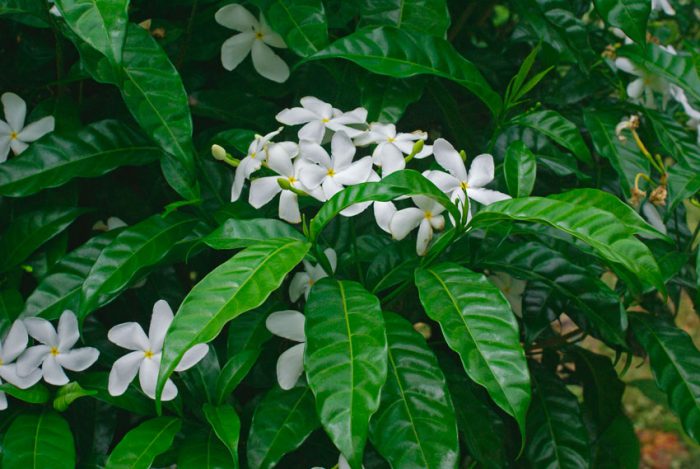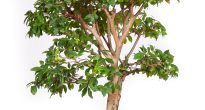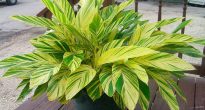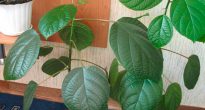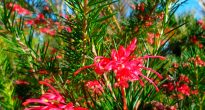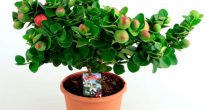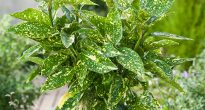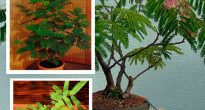Flowering evergreen shrub tabernemontana (Tabernaemontana) belongs to the Apocynaceae family. It comes from the subtropical and tropical regions of Africa, America and Southeast Asia. This shrub prefers to grow in coastal areas.
This plant was given such a rather difficult name by the German J.T. von Bergsabern, who was a botanist and physicist and lived in the 16th century. He called it by his own name, which he translated into Latin. If you translate this name literally into Russian, then it will sound like "mountain abode" or "mountain tavern".
When grown at home, such a shrub can reach a height of 150 centimeters. Green, leathery, shiny, pointed leaves have an oblong shape. The length of the sheet plate can vary from 7 to 20 centimeters (depending on the species), and the width - from 3 to 5 centimeters. Terry fragrant flowers can reach 4 centimeters in diameter. They can be painted white or cream. Flowering lasts all year round.
This plant is often confused with gardenia... The fact is that their foliage has an external similarity. However, these plants can be easily distinguished from each other during the flowering period. So, in tabernemontana, they are outwardly similar to small roses, and in gardenia they look like bells, while their petals are corrugated.
Taking care of tabernemontana at home
Illumination
The necessary bright lighting, but at the same time it must be necessarily diffused. Recommended for placement on east or west windows.
Temperature regime
Loves warmth. The most suitable temperature for keeping such a plant is from 18 to 25 degrees. In the summertime, it is recommended to take it outside (garden, balcony) if possible. In winter, the air temperature in the room where this tree is located should not drop less than 15 degrees. Does not tolerate drafts.
Humidity
High humidity is required, but at the same time tabernemontana can adapt to the dry air of city apartments, but in any case, it is necessary to systematically moisten the foliage from the sprayer. For this, well-settled water is used. It should also be remembered that this plant is better to spray more often than to water.
How to water
Reacts negatively to overflow. In the summer, water should be moderate, and in the winter, scarce.
Top dressing
Top dressing is carried out in spring and summer 1 time in 2 weeks. For this, it uses fertilizer for flowering indoor plants.
Transplant features
While the plant is young, it must be subjected to frequent transplants (up to several times a year). An adult specimen is subjected to this procedure once every 2 or 3 years. A suitable substrate must be loose and permeable to water. To prepare the soil mixture, combine humus and leafy soil, peat, perlite and sand, which should be taken in equal proportions. Do not forget to make a good drainage layer at the bottom of the container. Both slightly acidic and slightly alkaline soil are suitable for planting.
Reproduction methods
This plant can be propagated at any time. Cut off the apical stalk, which should be semi-lignified and 8 to 10 centimeters long. Rinse the section under running lukewarm water to remove the milky juice, as it clogs the vessels of the tabernemontana. To make the roots appear faster, treat with a product that stimulates their growth (Heteroauxin, Kornevin). The planting is carried out in a small container, and on top of the cutting should be covered with a cellophane bag or a glass jar. Remove to warm (about 22 degrees) and do not forget to ventilate systematically. Rooting will occur in about 4 weeks or later. When the roots no longer fit in the pot, the plant needs to be transferred to a larger container. The development of such a plant is relatively fast, and already some time after the appearance of the roots, flowering can begin.
Pests and diseases
Most often he suffers from chlorosis. To avoid this, treatments with iron vitriol or iron chelate are needed, and it is also necessary to acidify the substrate and add trace elements.
Can settle on a tree shield or spider mite.
It happens that small whitish droplets form on the seamy surface, drying out over time and becoming yellowish. This is a natural process for the release of substances from the leaf glands. They can form as a result of waterlogging of the soil or with a sharp change in temperature. They do not harm the tree.
If the room is too hot and low humidity, the buds can stick together and die off without opening.
Video review
Main types
Tabernaemontana divaricata
This evergreen highly branched plant is represented by trees and shrubs. There are large, dark green, shiny leaves that are opposite. In length, they can reach from 15 to 20 centimeters and have an oblong shape with pointed tips. On the seamy surface of the sheet plate, transversely located veins are clearly distinguishable. The branches are almost horizontal. Double or simple flowers, painted white, have a five-petalled corolla, while the petals are slightly bent in a spiral. The smell is quite persistent and is similar to the scent of jasmine. At the same time, the aroma becomes sharper at night. The fruit has a pod-like shape. Its outer part can be wrinkled or smooth and colored dark green, sometimes light spots can be seen on the surface. The juicy flesh has an orange color.
Elegant tabernemontana (Tabernaemontana elegans)
This compact evergreen tree branches heavily. Outwardly, it bears a resemblance to the tabernemontana divarikata, but it has a slightly smaller size. His flowers are not so fragrant, but this species is distinguished by its unpretentiousness and resistance to frost and direct sunlight.
Tabernemontana crowned (Tabrnaemontana coronaria)
This evergreen tree is highly branched. Glossy oval leaves with pointed tips are painted in a deep green color. Their length can vary from 6 to 12 centimeters, and their width is from 5 to 8 centimeters.The leaf plate is convex between the veins, which are clearly visible on the seamy surface, which has a lighter color. Flower buds are laid at the tops of the stems. At the same time, 2 lateral growth buds wake up. By the beginning of the flowering period, 2 small leaves appear from such buds. And when flowering ends, the stems begin to grow intensively. Through 2, 3 or 4 internodes, flower buds are laid again, and the branches bifurcate. The inflorescence bears 3-15 buds, which open gradually. Small (3-5 centimeters in diameter) semi-double flowers have delicate petals that are corrugated along the edge. They are distinguished by an exquisite and delicate scent, while it is the strongest in newly opened flowers.

